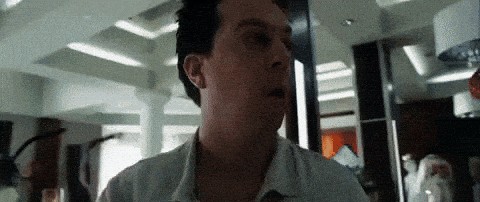A Capitaholic is an entrepreneur who becomes dependent on raising external capital to sustain or validate their business — often mistaking funding rounds for progress or success.
They chase the next raise instead of real revenue.
They build for the pitch deck, not for the customer.
They confuse valuation with value.
They sell vision because they can’t sell product.
They are often unconsciously doing this as a result of the first capital injection and the following demand for growth.
Over time, the business becomes structurally addicted to cash infusions, unable to operate sustainably without them. Growth is artificially inflated, costs balloon, and the company loses sight of profitability or product–market fit. Eventually, many Capitaholics face one of three outcomes: forced layoffs, a fire sale, or a quiet death.
The Cult of the Unicorn
The media and the VC landscape have a big part in this mindset — sprung from the chase for the next unicorn. The animal that never existed.
So what is the reason everyone’s trying to find one or become one?
TechCrunch headlines focus on the amount raised and the valuation — pre- or post-money. You seldom read about tech companies doing big deals with customers, or about the awesome companies that never raised any money in the first place yet make steady growth and profit every year.
The more drunk on money you are, the more spotlight you get. Sober companies don’t trend, and drunk companies believe in unicorns.
The VC Game
VCs focus on building portfolios of companies that have the potential to 10x or more in five years’ time. They boost them with their capital, knowing that most will fail. The 10x’er will cover for all the zeros.
But do you want to be a brick in that portfolio strategy?
To have the odds against you?
Looks like you do — if you’re a Capitaholic.
Just as I am. But I’m working on my sobriety.
The Five Stages of Capitaholism
1. The High
You’re high on the rush of capital.
You’ve just taken your first sip of the pre-seed gateway drug.
Your business is validated by investors, and you believe anything is possible.
You think you’re about to morph into a unicorn if you just follow the capital rabbit — down a hole that only gets deeper.
2. The Chase
After the first high, you need to keep getting those highs to sustain the costs and the demand for growth that came with it.
“Raise when you don’t need money” is something you might hear.
That’s great advice — to an addicted person — to make sure the hangover is kept at bay.
And with that mentality, you might end up doing nothing but raising money.
Still, you feel that you’re on your way to something big. The ambition is higher than ever, and even though the next round is not as much of a kick as the first one, you’re still feeling pretty good.
All focus is on raising more to scale more.

Gif by theoffice on Giphy
3. The Hangover
Eventually, you’ll run into the third phase.
This phase is called The Hangover. That ambitious feeling and growth focus have been swapped out for anxiety over your runway.
You feel the continuous need for money. You’re always slowly dying, and the capital injections are what keep you going.
You’re in the hands of the investors now. You might derail a bit because you don’t meet the high expectations of growth — because you haven’t really found product–market fit just yet, or have trouble scaling your business at the same tempo as you scale your costs.
There might be macro winds disturbing your path forward, or just a hype that moves from your vertical to another, and eventually, you have to start doing smaller bridge funding rounds, lower your valuation, and become increasingly diluted.
You no longer control the company you founded. The investors keep putting pressure on you to both grow and reduce costs simultaneously.
You’re a puppet dangling on threads. The show’s not yours anymore.

4. The Crash
The realisation of actually being in the third phase usually comes when you enter the fourth phase — The Crash.
The Crash is what makes you aware of your dependence on Venture Capital and that this is not sustainable anymore.
There are crashes that happen in an instant, and those that develop over a long period of time. You need to be reflective and aware to notice The Crash coming. However, you probably won’t.
The Crash can be losing your biggest client, a major downturn in the macro environment, a failed financing round — or all of them combined.
5. The Rehab
The Crash forces you into the fifth and final stage. Some die before this stage. Some exit head over heels just to make their résumé look a bit better because they believe failure is not seen as something good. (I argue otherwise.)
You have now entered recovery mode. Time for The Rehab.
Rehab for a Capitaholic is about getting rid of the addiction to external capital to run your business. Your costs now have to be covered by customers paying for your products and services. (Start with that insight next time you take that leap of faith and start your company.)
Time to cut costs, then. So what is enough? How much revenue do you lose by scaling down the team? How much future growth will evaporate?
Today’s macro environment can initiate a negative spiral, putting you in a position to downsize big — or multiple times. Or both.
The recovery stage is not fun, but it’s necessary to avoid bankruptcy. If you end up in bankruptcy anyway, the recovery stage is waiting for the one picking up the pieces — which might, unfortunately, be easier after bankruptcy than before.
The Exist Strategy
Is this what you hoped for when taking that leap of faith and starting your own business? To focus on your own addictive problems instead of your customers’ problems?
You might thread the needle and become the next Spotify or Klarna. But they have been through these stages as well — just late enough to deal with them on a bigger scale, and maybe as well in a better way.
There is another path that isn’t glorified. No one except your customers and your employees will care.
But you’ll build something sustainable. Something that matters for your customers, on a path that you control.
That path focuses on what truly matters:
A company that you don’t want to exit from.
A company that you own.
A company that doesn’t have to focus on anything other than creating value for its customers.
Maybe the real success is learning to exist — not to exit.
That’s all for this Friday. Connect with me on LinkedIn and let me know your thoughts on Capitaholism. What phase are you in?
Do you have friends or colleagues that should join this Newsletter? Please share it with them. The more followers, the more sober founders.
Till next time,
Jacob Kihlbaum





